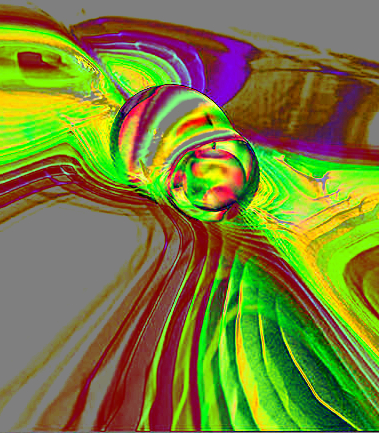Cosmic ripples revealed
 NASA says 15 years of radio data has revealed evidence of a space-time ‘murmur’.
NASA says 15 years of radio data has revealed evidence of a space-time ‘murmur’.
Scientists have found evidence of a universal background of gravitational waves, or ripples in the fabric of space-time.
The motion of black holes and other massive objects through space can create ripples in the fabric of the universe, called gravitational waves.
On June 28, scientists announced the first evidence of a background of long-wavelength gravitational waves that fills the cosmos.
These waves are thought to have been created over eons by supermassive black holes, up to billions of times the mass of our Sun, circling each other before they merge.
Detecting the gravitational wave background is analogous to hearing the hum of a large group of people talking at a party, without distinguishing any particular voice.
The background ripples detected by NANOGrav could help scientists better understand how gravitational waves are created and what happens to them as they propagate through the universe.
They could also be used to study supermassive black hole mergers, events that can last for millions of years. Scientists think these mergers happen in most galaxies and influence their evolution.
The North American Nanohertz Observatory for Gravitational Waves (NANOGrav) presented the evidence in a series of papers published in the Astrophysical Journal Letters.
The discovery complements the first-ever detection of gravitational waves in 2015 by LIGO, the Laser Interferometer Gravitational Observatory.
Those signals, at a much shorter wavelength than the new discovery, were from black holes about 30 times the mass of our Sun.
More details are accessible here.








 Print
Print